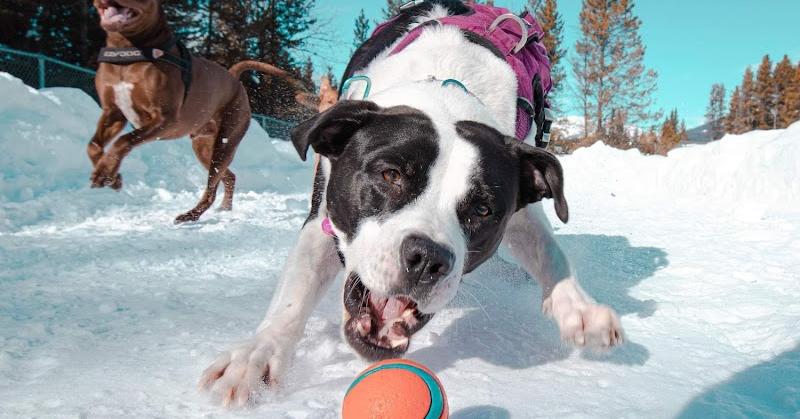Dogs are intelligent, energetic animals that thrive when trained properly. Teaching your dog basic commands like sit, stay, and come, as well as fun tricks like playing fetch, are great ways to stimulate their mind and strengthen your bond. With positive reinforcement training and a little patience, you can have your dog performing these skills in no time.
The Importance of Training Your Dog
Training is an essential part of responsible dog ownership. Beyond just teaching obedience, training helps socialize dogs and provides much-needed mental stimulation. Dogs that are well-trained are better behaved, easier to manage, and more enjoyable to be around.
Training strengthens the bond between owner and dog. As you work together to master new skills, your dog will look to you for guidance and approval. This mutual understanding and trust is the foundation of a close relationship with your pet.
Additionally, teaching basic manners like sitting and staying keeps your dog and others safe. When needed in certain situations, using the best dog muzzle uk can also help prevent biting incidents.
A dog that respects boundaries and follows commands in distracting situations is less likely to dart away or jump on people. Proper training creates a happier, healthier environment for everyone.
Create a Positive Training Environment
Effective training relies on positive reinforcement, not punishment. Positive reinforcement means rewarding your dog with treats, praise, or play every time they perform the desired behavior.
This teaches your dog that certain actions earn them something pleasant. Punishment, on the other hand, is ineffective, as dogs do not understand what they are being punished for. It will only lead to fear and mistrust.
Training sessions should be brief, engaging, and full of variety. Keep them short, just 5–10 minutes for puppies. Adult dogs can handle 15-20 minute sessions. Switch up the commands, practiced keeping your dog interested. Be enthusiastic and make training feel like a fun game, not a chore. Always end on a positive note.
Choose a quiet area without distractions for initial training sessions. Once your dog understands a command, practice it in various locations to strengthen the behavior. Reward generously at first, then slowly phase out treats as your dog becomes more reliable. Use praise, play, and occasional treats to reinforce commands long-term.
Teach Your Dog to Play Fetch
Fetch is a great way to exercise your dog’s body and mind. While some dogs naturally chase after balls and Frisbees, most need to be taught how to play fetch.
Step 1: Introduce the Toy
Let your dog investigate and mouth a ball or fetch toy to get comfortable with it. Offer lots of encouragement when they show interest.
Step 2: Initiate Chasing
Gently roll the toy just out of your dog’s reach to trigger their prey drive. When they catch up to the toy, praise enthusiastically. Throw the toy a little further as they get the idea.
Step 3: Pick Up on Cue
Say “take it” as your dog reaches for the toy. After a few repetitions, they will associate “take it” with picking up the object.
Step 4: Develop Returning
Move towards your dog while clapping your hands excitedly when they have the toy. Most will naturally run back to you. Say “bring it here” as they return, then reward with treats and praise.
Step 5: Combine Commands
Now you can cue the entire sequence. Say “take it” as you throw the toy, then “bring it here” when they have it. Reward every successful fetch. Gradually phase out treats and replace with affection.
Be patient as your dog masters each step. Keep sessions short and fun. With practice, your dog will happily chase, retrieve, and return toys to you.
Train Your Dog to Sit
Sit is often one of the first obedience commands taught. When mastered, it helps dogs learn stay, down, and more. Follow these steps to teach your dog to sit on cue:
Step 1: Capture the Behavior
Wait until your dog sits naturally, then say “sit.” Praise and reward. Repeat this capture method several times.
Step 2: Lure to a Sit
Hold a treat at your dog’s nose level, then slowly move it back over their head until their butt touches the ground in a sit position. Say “sit” then give the treat.
Step 3: Add the Cue
Ask your dog to “sit” first, then lure them into position if needed. Remember to reward every time they respond to the verbal cue.
Step 4: Phase Out the Lure
Now only reward your dog for sitting after hearing the verbal cue without being lured.
Step 5: Practice Sitting
Gradually increase the duration of sitting before rewarding. Practice sitting in various locations to ensure your dog understands. Reward occasionally to maintain motivation. Your dog now knows the sit command!
Be patient and consistent while training sit. Keep sessions upbeat and end on a positive note if your dog becomes frustrated. With regular practice, your dog will soon sit automatically whenever you say the word.
How to Teach Your Dog to Stay?
Stay is an essential command that reinforces impulse control in your dog. With stay training, your dog will learn to remain calmly in place until released. Follow these tips for teaching stay:
Step 1: Start in Sit Position
Have your dog sit first. Reward several times for quick sits to reinforce this prerequisite behavior.
Step 2: Signal the Stay
Stand in front of your sitting dog. Say “stay” then hold your palm out in a stopping gesture. Take one step back and immediately return to reward if they remain seated.
Step 3: Gradually Increase Distance
Slowly take more steps back before returning to the reward, building up distance over multiple sessions. Vary how long they must stay before getting a treat.
Step 4: Add Distractions
Once your dog can stay while you walk around the room, add distractions like toys or tempting food. Reward staying focused on you and disregarding the distraction.
Step 5: Release on Cue
Say “okay” or “free” in a happy voice to release your dog from the stay position. Play, praise, or give a treat after the release. Only release once they are calm and focused.
Stay takes a lot of self-control from your dog, so keep training positive. If your dog breaks the stay, simply return to an easier distance and try again. With consistent practice, your dog will learn to wait in stay until you give them permission to move.
Train Your Dog to Come When Called
A reliable recall or “come” command could save your dog’s life if they ever get away from you. Follow these tips to teach your dog to come when called:
Step 1: Say Their Name
Get your dog’s attention by saying their name in an excited tone before saying “come.” Use tasty treats to motivate them.
Step 2: Call from Short Distances
Stand just a few feet from your dog and call them to you using their name and “come” command. Reward with treats and praise when they reach you.
Step 3: Increase Distance
Gradually increase the distance from which you call your dog, continuing to reward every successful come. Practice in safe, enclosed areas at first.
Step 4: Add Distractions
With your dog on a long leash, practice to come when distracted by toys, other pets, or people. Reward for ignoring the distraction.
Step 5: Reinforce Consistently
Continue rewarding your dog randomly when they come so they never know when a treat is coming. This maintains motivation. Offer jackpot rewards periodically too.
Avoid repeating “come” over and over, as this dilutes the power of the command. Your dog should learn that come always results in something positive, whether it’s affection, play, treats, or just their leash clipped on to go for a walk.
Final Tips for Training Your Dog
- Keep sessions short, positive, and rewarding to maximize progress. Just 5-15 minutes at a time is ideal.
- Be patient and consistent. Dogs learn through repetition and may not master new commands right away.
- Train one skill at a time. Don’t overwhelm your dog by working on multiple commands in the same session.
- Use hand signals along with verbal cues. Signals help dogs understand what you want.
- Practice obedience skills like sit, down, stay, and come daily to reinforce them long-term.
- Gradually introduce distractions to strengthen your dog’s reliability around temptation.
- End each session on a positive note with play, praise, or a fun trick to keep your dog engaged in training.
With regular, short training sessions full of encouragement and rewards, you’ll be amazed at what new tricks your dog can learn. The effort invested will pay off with an obedient companion ready to play fetch or cuddle up and stay by your side.





